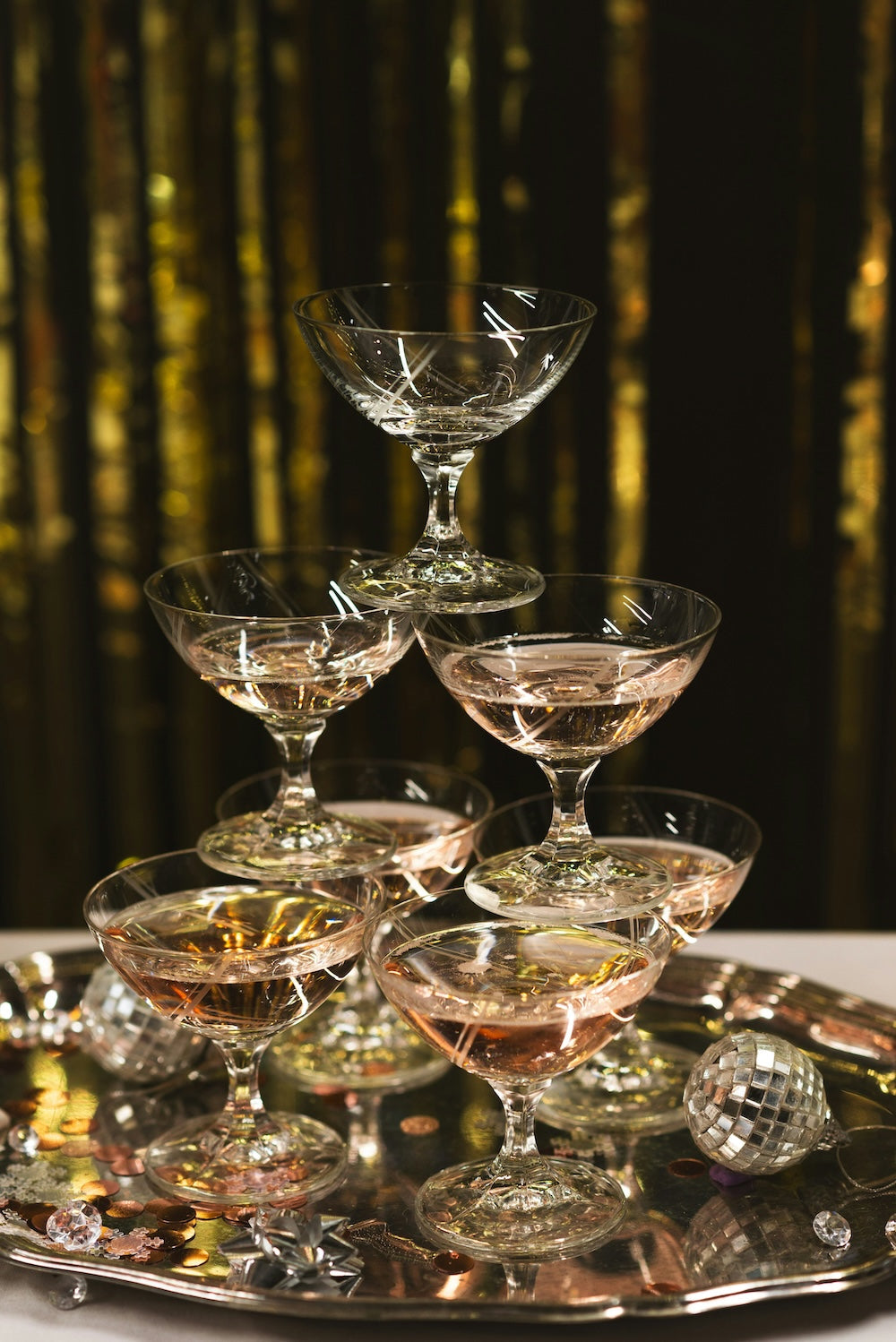Where does the term “honeymoon” come from?

Mead, marriage, & money.
If the term “honeymoon” hadn't been indoctrinated into our vocabularies, the phrase would certainly raise eyebrows. As it stands, it sounds a bit more like a DTC skincare line or a Dixie Chicks rival band than it does an age-old marital tradition upheld for millennia—and for what it’s worth, the practice is far from a dated boomer-era prospect. Contemporary couples, throuples, and polycules—heterosexual or otherwise—are still reliably honeymooning in the wake of weddings or wedding-adjacent ceremonies. So where, exactly, does the tradition—and its terminology—come from?
Well, the etymology is relatively simple: The term comes from the Old English “hony moone,” with Hony (honey) referring to the “indefinite period of tenderness and pleasure experienced by a newly wed couple" (which is to say, the sweetness)—and Moone, referring to the fleeting nature of that very sweetness. Records of the term “Honeymoon” that date back as early as the 5th century, when cultures were still using moon cycles to chart the passage of time. In that era, newlyweds would drink meade (honey wine)—which is said to have aphrodisiac properties—during the first “moon” of marriage.
The first properly recorded use of the word dates back to 1542, when Samuel Johnson wrote: “The first month after marriage when there is nothing but tenderness and pleasure; originally having no reference to the period of a month, but comparing mutual affection of newly-married persons to the changing moon which is no sooner full that it begins to wane…” On the one hand, it’s all romantic and tender…but on the other, it can be read as a foreboding warning of new love’s transience.
That said, the very nature of the honeymoon wasn’t always about glamorous resort getaways and luxe swimsuits. In 19th century Britain, betrothed couples were made to go on a “bridal tour” where they traveled around together visiting friends and family who hadn’t made it to the wedding—which, frankly, in 2022, sounds like a war crime.
Fortunately, by the 1800s, the custom had curbed itself ever so slightly to allow for newlyweds actually to enjoy a bit of alone time. As bridal tours became less popular, the notion that a couple, post-wedding, might set off on a trip together to enjoy their romance in solitude remained. And in Christian cultures, where pre-marital sex is often verbotten, a luxurious trip elsewhere as a way of ringing in a future of (hopefully) regular sex lends a little ceremony to the already ceremonious virginity loss.
At present, not so much has changed. Honeymoons are still wildly popular post-wedding traditions (even for the non-traditional couple)—and they’re often still celebrations of sensuality and intimacy. But nonetheless, there are a handful of updated elements worth noting: Honeymoon funds are a perfectly standard addition to most registries as a way to help couples prioritize the “trip of a lifetime” over yet another blender—a practice that grows consistently more popular being that couples are far less likely than they once were to own property or a permanent residence together at the time of marriage. Hotels and spas still offer “honeymoon packages” aplenty—but now, they’re often a bit more unabashedly sultry, often providing mood lighting, sex toys, lube, and more. “Minimoons” have become a popular way for couples to consummate their weddings post-ceremony without blowing all of their funds or taking a lengthy vacation (having, ya know, just enjoyed the most expensive party of their lives). And perhaps most novel of all, we’re seeing the rise of the “Buddymoon”—a traditional honeymoon with one asterisk: newlyweds bring friends along for the ride.

